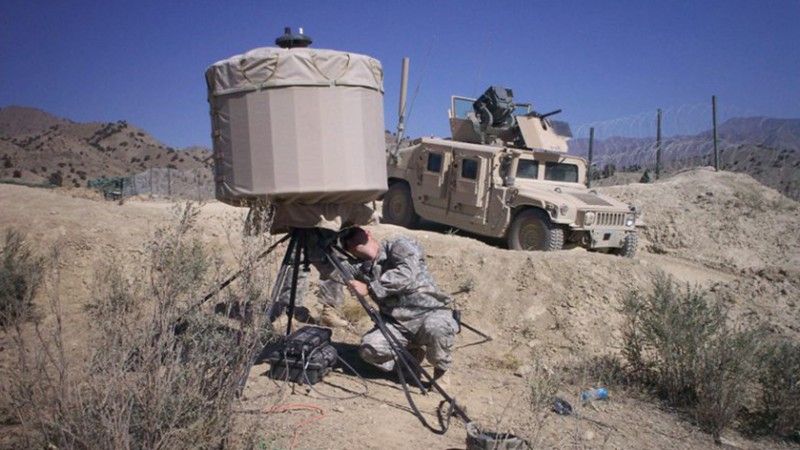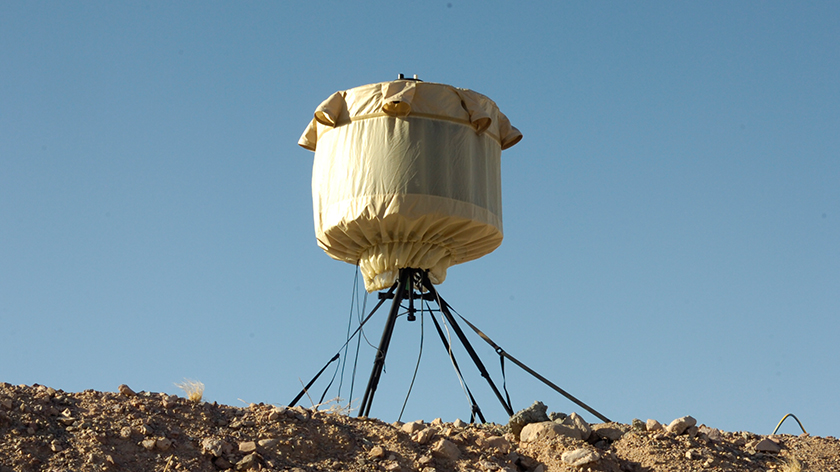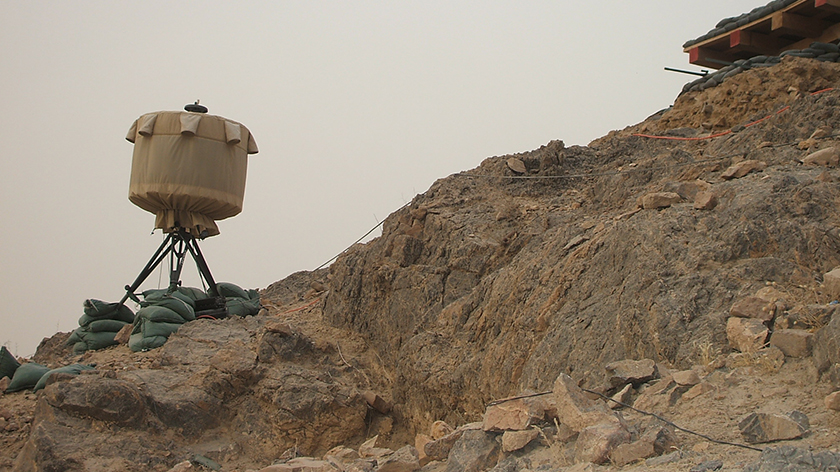AN/TPQ-49 - US Light Counter-Fire Radar

AN/TPQ-49 light counterfire radar is a system, which could act a complementary measure that is going to be coupled with the heavier firefinder radar assets. The radar may act as an element of an early warning system for detection of missiles, artillery and mortar rounds, but it can also be employed as a part of the fire control system for own artillery assets.
AN/TPQ-49 counterfire radar is classified as C-RAM equipment (Counter Rocket, Artillery, and Mortar). The primary purpose of such radiolocation is to provide own forces with relevant information concerning the incoming RAM ordnance. Secondly, systems of this class are also utilized in order to define the locations from which the rounds are fired, and thus make it possible to develop firing solutions for own artillery assets.
As there is a demand to immediately react to the emerging threats, counterfire radars shall be characterized by a high degree of accuracy and short span of reaction time. Thus, rotating antenna arrays are seen as insufficiently efficient in case of such systems, as the refresh rate in case of the rotating antenna is too low, to intercept artillery rounds travelling at high velocities. Thereby, most of the counterfire radars use fixed and relatively large antenna arrays.
The antenna dimensions are fairly important, as high resolution and quality track specification are indispensable to detect small rounds. These parameters depend on the antenna array physical dimension too. However, the larger the antenna is, the greater the radar dimensions become, which makes the station much more expensive and much harder to transport and deploy. Furthermore, fixed antenna makes the array directional, limiting the size of the area monitored. AN/TPQ-49 is a light US-made system that may be used as a measure that could complement other, heavier firefinder assets.

This electronically scanned antenna is the main feature that distinguishes this radar. The antenna in question allows for 360 degrees observation and 3D target tracking (elevation from 0 to 30 degrees). However, directional (sector) operation is also possible, which enhances the refresh rate achievable by the radar.
The manufacturer suggests that the radar in question makes it possible to detect and track rounds that were shot within the observed area of around 315 square kilometres (10 km radius), with regards to numerous rounds being tracked simultaneously. The data may be used within the early warning system. It is also possible to define the RAM firing positions on the basis of the information gathered by the radar, at ranges greater than 10 kilometres, and with 75 metres of accuracy at distance of 5 kilometres. The said data may be utilized to launch a relevant counter-attack.
Thus, the user may rapidly react and destroy the enemy artillery before it changes its position. This may happen within the framework of the C4ISR, SHORAD or defence systems used in an ad-hoc manner by the deployed units.
The firefinder radar that was being operated [by the US units] previously, AN/TPQ-48, had been designed for the latter purpose, fulfilling it within C-RAM systems for the US SOCOM quick reaction forces. Thus AN/TPQ-48 system has also been designed with the potential air-drop operations in mind.
The combat experience gathered with regards to the AN/TPQ-48 system led the designers to mechanical reinforcement of the AN/TPQ-49 solution, along enhancement of the tactical specification and functionality. Thanks to the above two operators may set up and dismantle the radar in less than 20 minutes. And this is possible primarily thanks to the new antenna design: the antenna array weighs 68 kilograms, has a diameter of 102 cm and is 216 cm high. The small dimensions greatly contribute to the system’s portability.
The antenna section is based on a special tripod that may be deployed anywhere, also on the buildings, or as a part of the forward operating base infrastructure. The antenna system itself may also be installed on masts, thanks to which the observation range could be potentially extended, which is especially valuable in rough terrain.

The radar power consumption is low (up to 1.2 kW), which does not require a specific purpose dedicated power supply unit. It is enough to provide 110/240 VAC or 24 V DC electricity (generator or a vehicle). Alternatively, a battery may also be used as a power supply for the system. According to the Americans, the radar in question may also be used by small elements stationed at forward operating bases. This is one of the reasons that motivated the designers to give the AN/TPQ-49 an ability of being operated remotely.
The antenna array is shock-proof as it does not feature any moving parts, which also translates into low maintenance requirements. This, on the other hand, significantly diminishes the operational costs throughout the radar’s lifecycle. The antenna itself consists of 24 identical longitudinal column-shaped antenna systems, uniformly distributed with 15 degrees increments around the central base. The above makes it possible to create 24 overlapping beams. The columns may be arranged and freely dismantled. In transport setting they may be packed separately.
AN/TPQ-49 is a modular expandable design. Tests are in progress, the goal of which would be to integrate the antenna array with an optronic sensor, which would make it possible to create a complete security and observation system. The same method is used for setting up secondary radar antenna array with IFF system integrated. This makes it possible to utilize the AN/TPQ-49 radar as a part of airspace monitoring and air traffic control solution.



